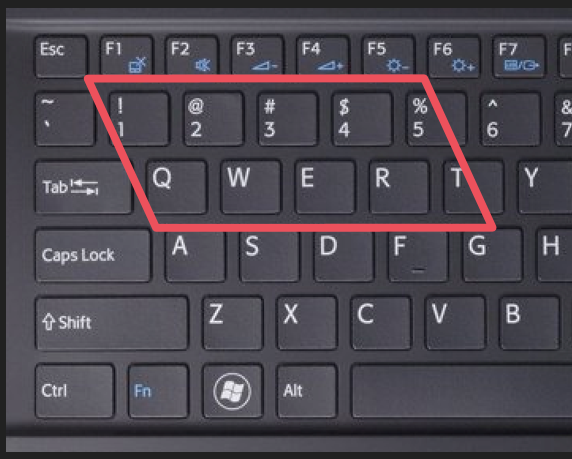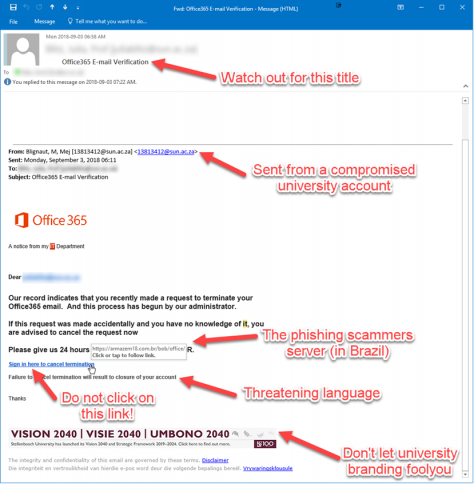kuberstrikroof
(English) Cybersecurity Awareness Month: Where do scammers get your information?
Vrydag, Oktober 12th, 2018Kubersekuriteit-bewustheidsmaand: Algemene wagwoorde
Woensdag, Oktober 3rd, 2018Datasekuriteit wêreldwyd is die afgelope twee jaar ʼn stewige knou toegedien met ʼn groot getal wyd-gepubliseerde kuberkraak-insident, databreuke en afpersing-insidente.
SplashData publiseer jaarliks ʼn lys van die algemeenste wagwoorde. Die lys word saamgestel deur data te gebruik van meer as vyf miljoen wagwoorde wat uitgelek is deur kuberkrakers in 2018. Die enigste gevolgtrekking waartoe ons kan kom as ons na die lys kyk, is dat ons steeds nie leer uit ons foute nie.
Wagwoorde wat maklik is om te raai word steeds deurlopend gebruik om belangrike inligting te beskerm. “123456” en “password” staan steeds sterk in die eerste en tweede plek op die lys — vir die vyfde jaar opeenvolgend. Daarbenewens maak die twee swakste wagwoorde ook deel uit van ses ander wagwoorde op die lys.
SplashData raai dat ongeveer 10% mense ten minste een van die 25 swakste wagwoorde op dié jaar se lys gebruik en amper 3% gebruik die swakste een — 123456
Hier is die lys van die top 10 wagwoorde vir 2018:
- 123456
- password
- 12345678
- qwerty
- 12345
- 123456789
- letmein
- 1234567
- football
- iloveyou
ʼn Ander populêre keuse is 1q2w3e4r5t.Dit mag redelik kripties lyk, maar as jy na jou rekenaar se sleutelbord kyk is dit maklik om te raai.

Die meeste rekenaargebruikers onderskat steeds die belangrikheid van ʼn sterk, veilige wagwoord en gebruik steeds eenvoudige woorde of nommers as hulle wagwoorde.
“Passwords are the only control you have to secure your data with most systems these days. If your password is easily guessed by someone, then the person essentially becomes you. Use the same password across services and devices, and they can take over your digital identity.” Shaun Murphy, CEO of SNDR.
(English) Warning: Phishing scams with fake invoices
Maandag, Oktober 1st, 2018“Office 365 verification” phishing scam from compromised student account
Maandag, September 3rd, 2018Please be on the lookout for the following phishing scam coming this morning from a compromised student account:
The subject will be “Office365 E-mail Verification” (or a variation) and says that “you recently made a request to terminate your Office365 mail” and to click on a link to cancel this termination.
The mail should be immediately suspicious to most people with common sense and awareness of phishing scams, but here are a few signs:
- Why is a student account sending you mail about your “termination” of an Office365 account?
- Why are they threatening you to verify or lose your account?
- Why does the link point to a site that is not in the university network and is in Brazil of all places?
- Why is something as “important” as this being sent in a non-secure email?
Here is an example of one of these phishing emails that several observant students and colleague have sent me this morning already!
If you have accidentally clicked on the link and given your login details to the phishers it is vitally important that you immediately go to the USERADM page (either http://www.sun.ac.za/password or www.sun.ac.za/useradm and change your password immediately. (Make sure the new password is completely different and is a strong password that will not be easily guessed, as well as changing the passwords on your social media and private e-mail accounts, especially if you use the same passwords on these accounts.)
If you have received mail that looks like the one above, please immediately report it to the Information Technology Security Team using the following method: (especially if it looks like it comes from a university address) Once you have reported it, delete it immediately.
- Start up a new mail addressed to sysadm@sun.ac.za (CC: help@sun.ac.za)
- Use the Title “SPAM” (without quotes) in the Subject.
- With this New Mail window open, drag the suspicious spam/phishing mail from your Inbox into the New Mail Window. It will attach the mail as an enclosure and a small icon with a light yellow envelope will appear in the attachments section of the New Mail.
- Send the mail.
[ARTICLE BY DAVID WILES]


